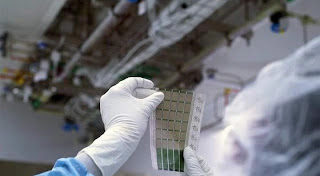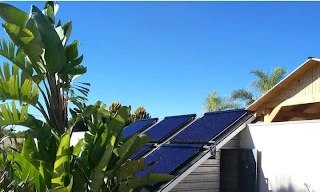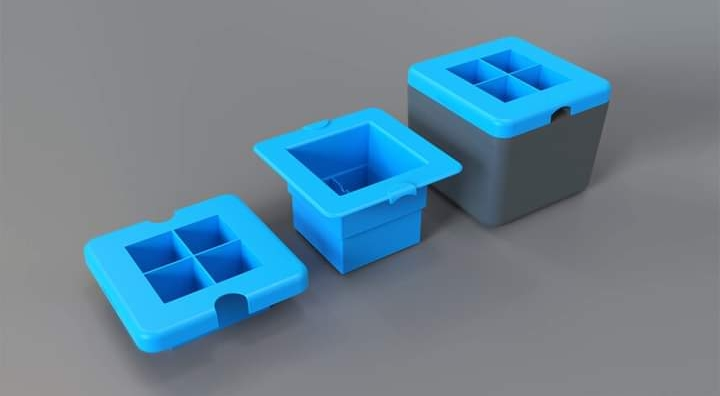Breakthrough In Solar Power: Paper-Thin Solar Cells
Engineers at MIT (Massachusetts Institute of Technology) have developed extremely thin cloth-like solar cells.
Breakthrough In Solar Power: Paper-Thin Solar Cells
By placing this cell on the surface of any object, it will be possible to use that surface as a source of energy very quickly and easily.
Durable and flexible, this solar cell is thinner than human hair. The cells are attached to a type of fabric that is strong and light. Due to this, it is easy to install solar cells on any specific surface.
Attached to clothing, these solar cells can generate electricity while out and about. Again, this solar cell can be sent to an inaccessible place for help in an emergency. By placing it there, electricity generation can be started quickly with this solar cell.
The new solar cell weighs one hundredth of conventional solar panels. Again, 18 times more energy can be generated from each kilogram of solar cells than conventional solar panels.
These solar cells are manufactured using a printing technology that will enable the production of solar panels on a much larger scale in the future. These solar cells are printed with a type of semi-conducting electrical ink.
Solar cells are so thin and light that they can be easily mounted on a variety of surfaces. For example, they can be attached to the sails of the boat if desired. By doing this, it will be possible to generate electricity from this solar cell on the sail of the boat while moving in the river or sea.
Again, during disasters, solar cells can be added to tents or tents to generate energy. Even the battery of the drone can be charged by placing this solar cell on the fan of the drone. As a result, those drones can fly further.
Besides, this light weight solar technology can be easily added to any installation to produce energy. And that’s why there’s no need to use too many tricks.
Professor Vladimir Bulovich, director of MIT Nano, said researchers typically look at two things to measure the effectiveness of a newly invented solar technology. How much energy is being produced from light from the sun and how many dollars per watt of electricity is being produced. But how easily a new technology is going to be used is also important as these two things. We are trying to increase the use of solar energy on a large scale. Because there is an urgent need to start using new sources of carbon-free energy.
The paper that mentioned this new solar technology was authored by two other people besides Vladimir Bulovich. They are Jeremiah Muaura, a scientist at the MIT Research Laboratory of Electronics, and Myuran Saravanapavanatham, a graduate student in electrical engineering and computer science.
The research paper was published in the journal ‘Small Method’ on December 9 last year.
The Way This Solar Cell Is Made Is Thin
Conventional solar cells made of silicon can easily break. So they have to be used encased in glass containers and placed in a thick aluminum frame. Because of this, these solar panels cannot be used whenever and wherever you want.
6 years ago, a group of researchers at ‘One Lab’ made solar cells using a new type of tiny material. Such tiny materials are called ‘thin films’, which can range from a few micrometers to less than a nanometer.
The solar cells the researchers created were so light that they could easily be placed on soap bubbles. But the ultra-thin solar cells were made in a complex vacuum-based process. Thus making solar cells is very expensive. Moreover, they are also very challenging to produce on a large scale.
Meanwhile, in this recent study, scientists were trying to create a solar cell using ‘thin films’ that can be printed. In this technology, they thought of using a type of material that basically works like ink. The researchers also wanted to develop a method to produce these solar cells at any scale.
To create such solar cells, scientists have used nanomaterials, which are in the form of electrical ink or ‘electronic ink’.
During the research, the scientists in the ‘MIT Nano Clean Room’ laboratory added a type of coating to their invented solar cell. This coating, given in a method called ‘slot-die coating’, consists of nano-sized electrical components. This coating is applied to a screen only 3 microns (1 millionth of a meter) thick, called a ‘releasable substrate’.
Finally, an electrode is placed on the structure of the solar cell in the process of ‘screen printing’ (the same way something is printed on a T-shirt by the ‘silk screening’ method).
The researchers then peel off the printed solar panel, or module, from the plastic layer, which is about 15 microns thick. And this is how the very thin device or solar module used in the production of solar energy is made.
But working with such thin solar cells or ‘solar modules’ is very difficult. They can easily break. And because of this, it is difficult to install this module on any surface. To solve this problem, MIT scientists were looking for a membrane or layer that is lightweight, flexible and strong, so that solar cells can be easily installed.
After considering various issues, they decided to use cloth for this work. Because this module can be easily placed in the fabric, and the fabric is flexible at the same time. In addition, if the module is placed on the cloth, its weight does not increase much.
However, after looking for what kind of fabric is ideal for this work, a type of composite fabric or ‘composite fabric’ is selected. Commercially known as ‘Dynima’, this fabric weighs only 13 grams per square meter. This cloth is made of very strong fibers. This fiber is so strong that a rope twisted with this fiber was used to pull a ship called ‘Costa Concordia’ that sank under the Mediterranean Sea.
To attach this module of solar cells to the ‘Dynima’ fabric, glue is applied to it. After attaching the module to a coating of glue just a few microns thick, the glue is cured with UV light. This is how this very thin and strong solar structure is made.
Saravanapavanatham said, “It may seem easy to print solar cells directly onto fabric. But by doing this, this device or module could be installed only on one type of fabric. This module was added only to fabrics that were suitable for undergoing the chemical and thermal processes required for the various steps of the solar cell installation process. This would reduce the possibility of placing this module on other fabrics or fields. Our study separates the process of building a solar cell from the stage of its utilization.”
More Efficient Than Conventional Solar Cells
When MIT researchers tested their invention, each kilogram of solar cells could produce 730 watts of power. And 370 watts of electricity can be produced from every kilogram of solar cells when placed on strong Dyneema cloth. In other words, this new invention can produce 18 times more energy per kilogram than conventional solar cells even after placing it in Dyneema cloth.
He (Saravanapavanatham) said, “A typical rooftop solar panel in Massachusetts produces 8,000 watts of electricity. But adding just 20 kilograms or 44 pounds of (newly invented) fabric photovoltaics to the installation can produce the same amount of energy.”
Researchers have tested the stability of this device. It showed that even after being folded and folded more than 500 times, the efficiency of the cloth solar cell did not decrease much. These solar cells can produce as much electricity as they could in the beginning after the construction, after the test, about 90 percent of the electricity is being generated.
This newly developed solar cell is much lighter and more flexible than conventional solar cells. But it has to be kept inside some other structure to protect it from environmental damage. The new solar cell is made of carbon-based organic material that chemically reacts with moisture and oxygen in the air. This can reduce the performance of solar cells.
“Like conventional solar cells made of silicon, this newly developed solar cell needs to be placed in a heavy glass structure to be used,” Muaura said. And this can greatly reduce the importance of innovation. So researchers are now working on ultra-thin coatings for the packaging of newly invented solar cells. Adding this coating to a very light solar cell doesn’t add too much weight.”
He added, “We want to remove as much as possible from this invention all the components that are not useful for solar energy production. But at the same time trying to retain the performance and quality of this extremely thin and flexible solar structure. For example, we know that the manufacturing process can be simplified if the ‘releasable substrate’ (a part of the module) is printed in the same way as the other layers of the module are made. This will make the technology ready to go to market faster.”
An Italian petroleum refinery company named ‘Eni S.P.A.’ has funded this research through the ‘MIT Energy Initiative’ project. It was also funded by the US National Science Agency and the Natural Sciences and Engineering Research Agency of Canada.




